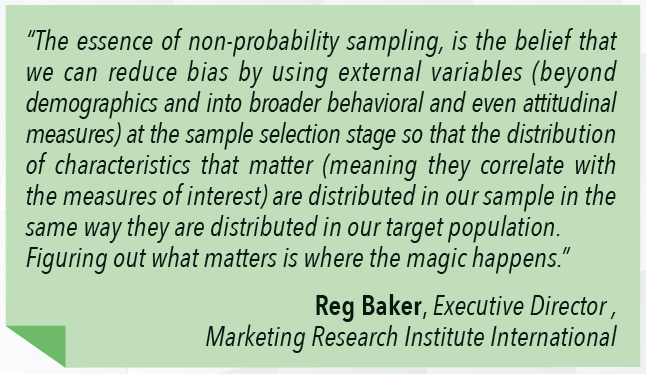
One of the “magic” techniques for improvement representativeness is sample matching. The easiest way to think of sample matching is that is quota sampling on steroids. Now you are not trying to fill a cell of 50 respondents who are women aged 55+; you are trying to fill a cell of 1 respondent who is woman who is 57, African-American, lives in Newton Falls, Ohio, and has just a high school education.
Seriously.
Polimetrix was one of the pioneers of sample matching for online survey research. Sample matching is a technique inspired by probability sampling, but here the probability sample is taken of a population model. For instance, 1,000 members of the population are each selected at random from the U.S. adult population of 244,563,362. Members are selected from a model of the population built using U.S. Census data, credit records, and other data sources.
Now how do you fill your quota cell for that one 57-year old African-American woman at zip code 44444 who has just a high school diploma? You look in your panel where… you don’t find her (99.6% of the time, with a panel of 1 million members). Instead, you use a proximity function to evaluate all members of your panel to see who most resembles the randomly selected member of the target population. For instance, in the panel you have a 59-year old African-American woman in 44481 who went to college; you have a 57-year old Caucasian male with a GED in 44203. For every member of the panel, you calculate how far apart they are from your target (distance in age, gender, physical location, etc.) and invite the one who is closest to take the survey in their stead.
Sample matching is inspired by medical research, where it was developed to find members of the population similar in as many ways as appropriate to those members of the study who had received a particular treatment. In this way, estimates of the effect of treatment can be made more accurately.